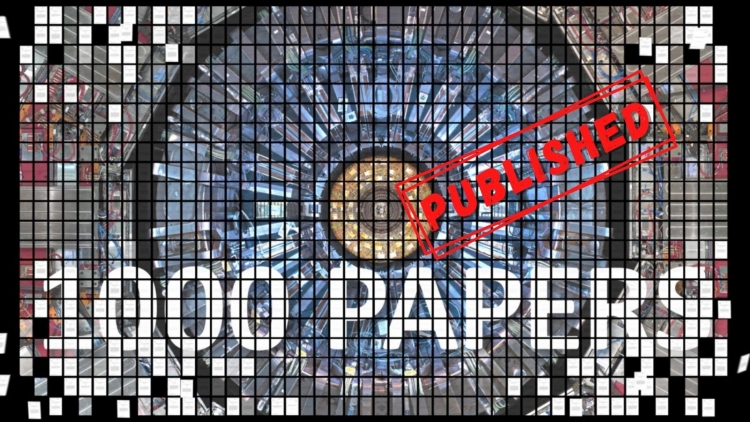
On November 24th, the CMS collaboration at CERN's Large Hadron Collider announced the publication of the 1000th paper in a peer-review journal, a truly exceptional achievement for a single Experiment.
A thousand published papers, more than 100 per year, highlights the outstanding work productivity and the dedication of scientists of the CMS collaboration. For the last ten years, CMS scientists have been producing, testing and publishing insights arising from the spectacular particle collisions at the LHC, describing fundamental aspects of the quantum universe one paper after another. Peering into the behaviour of nature's most fundamental constituents through the lens of the humming, high-tech machine known as the CMS particle detector, the CMS collaboration has contributed immensely to the very foundations of knowledge in particle physics.
It was the beginning of this summer, specifically the 19th of June 2020, when the CMS collaboration announced the important milestone of 1000 submitted papers to scientific journals. Submitting a paper to a peer-reviewed journal is a crucial step in the path of research: it means the paper has gone through the many months and multiple-steps of tight internal review by the collaboration and then it’s finally considered highly reliable enough to be shared with the rest of the world. But it is not the end of the journey. Each journal has its intensive anonymous peer review that assures the high quality of the paper. Only after that journal review, the article is published.
A few months later, this November, there was an announcement that 1000 papers have now been accepted and published in prestigious scientific journals. CMS is the first experimental collaboration to reach this achievement in the history of high energy physics.
"We are proud of reaching this unprecedented landmark, the publication of 1000 CMS papers in peer-reviewed journals. The scientific impact of the CMS publications has been at the highest level," said Boaz Klima, CMS Publications Committee chair. He added that "this is a testament to the hard work and ingenuity of our collaborators as well as to the very demanding scientific review process within the collaboration."
A thousand published papers are not only proof of the high-quality work which is produced by the CMS collaboration but also a highlight of the incredible variety of high energy physics topics which have been covered throughout the years: Standard Model-related studies and beyond, Dark Matter, Supersymmetry, Exotic physics, Antimatter and of course the Higgs boson.
The discovery of the Higgs particle, in the 183rd paper, was a major breakthrough but many mysteries still remain despite it having been observed many times since 2012. The Standard Model, humanity’s current best theory to describe fundamental particles and forces, is not able to explain the many questions in physics, and the discovery of the Higgs boson has only created more questions.
The Large Hadron Collider will operate for another two decades. During this time the search for new particles and the study of when the Standard Model will break will only intensify. In 2025, after the Run3, the data is expected to increase drastically, by a factor 20, when the LHC transitions to a new phase called High-Luminosity LHC. All this new data will continue to be a source of creative new physics results, and the CMS collaboration is looking forward to trying to find answers to the many questions the world around us still keeps.

